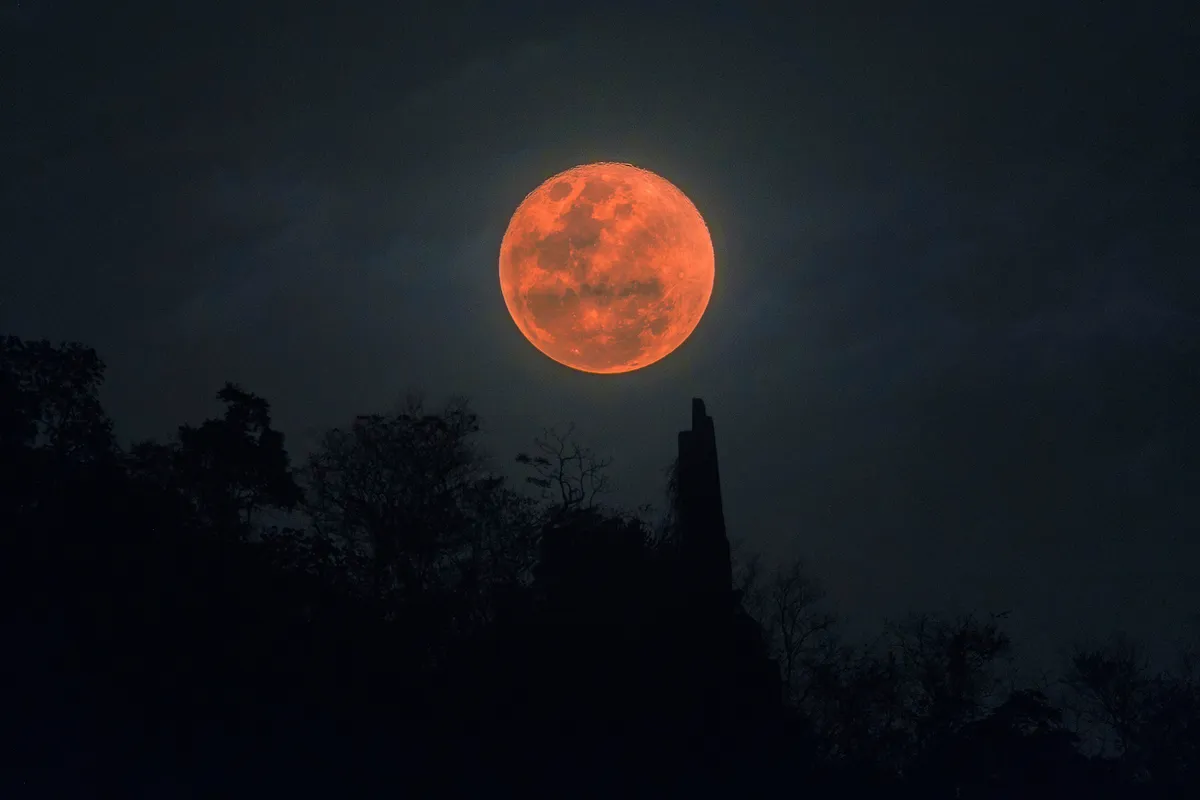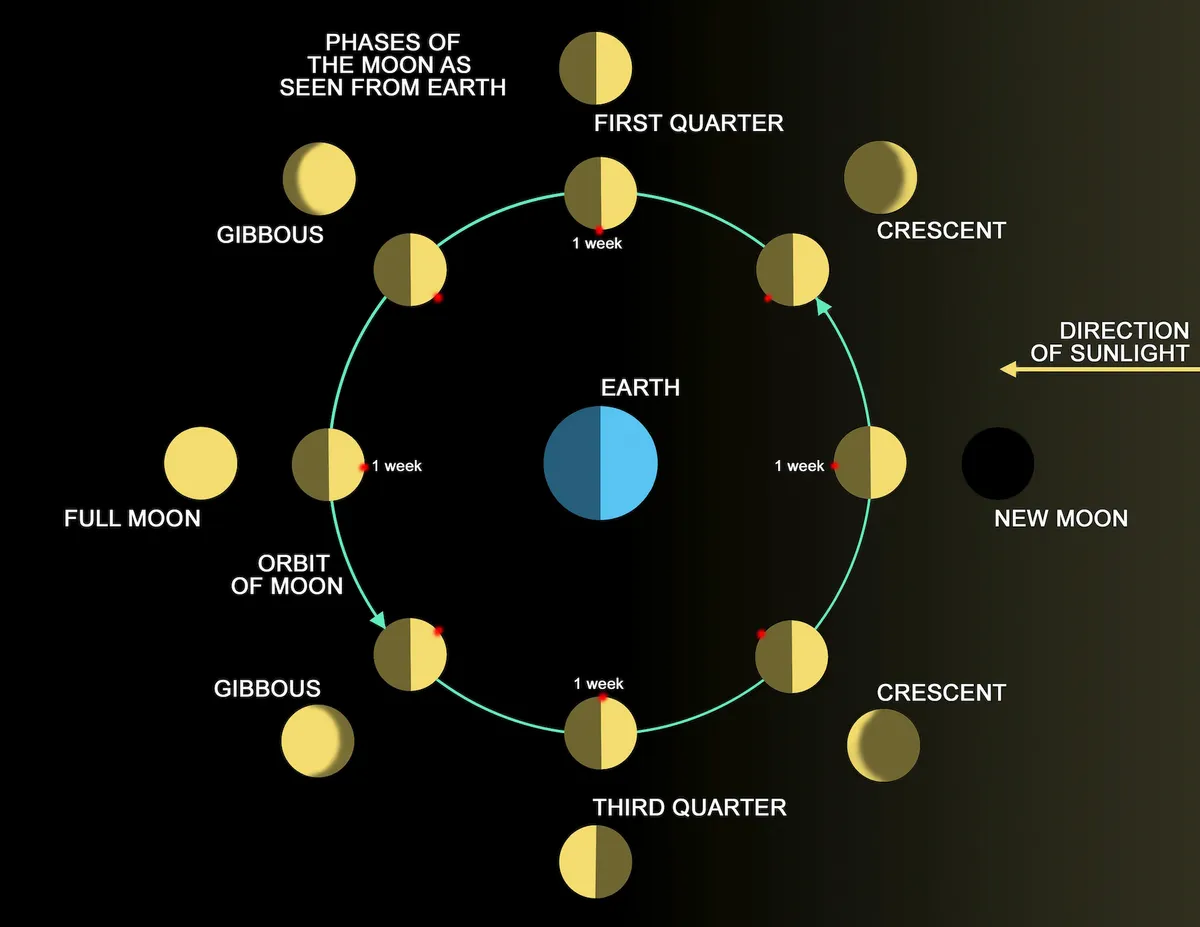Remnants of Halley’s Comet can still be seen lighting up the morning skies in the Eta Aquariid meteor shower, and this month’s full Moon brings with it a total lunar eclipse.
But when exactly can you see the Flower Moon? Which constellation will it appear in? And, what's the best time to view it? Answers to these questions, and more, are below.
For those who missed it, you can check out our fantastic gallery of the best Wolf Moon pictures, the first full Moon of 2022. If you’re looking forward to clear nights this year, why not plan ahead with our full Moon UK calendar and astronomy for beginners guide?
When can I see the Flower Moon 2022?
The Flower Moon will be visible in the evening of Sunday 15 May 2022 and in the morning of Monday 16 May 2022, in the UK and around the world.
The Flower Moon will be located in the direction of the constellation Libra, the only one of the Zodiac constellations to represent an object rather than a person or character. The next night, on the 17 May, the Moon will be 3.1° north of Antares, the brightest star in the constellation of Scorpius.
On Sunday 15 May from London, the Flower Moon will rise at 8:10pm from the east-southeast and set at 5:10am the next morning in the west-southwest.
The Flower Moon this year will reach peak illumination at 5:14am on the morning of Monday 16 May. However, as this is just after the Moon sets at 5:10am, we will not be able to see the exact moment when it reaches syzygy. Syzygy is the name given to a configuration that occurs for just a moment, when the Moon is directly between the Sun and the Earth, in a straight line.
What’s special about the Flower Moon in 2022?
The Flower Moon on the 16 May brings with it a total lunar eclipse, and a so-called ‘Blood Moon’. The eclipse will happen in the early hours before dawn, as the Moon is low on the horizon, and the Moon will take on an increasingly red colour as totality approaches.
Totality occurs at 4:29am on Monday morning, but weather permitting, early risers will be rewarded with a bright copper-red Moon before it sinks below the horizon at 5:06am.
For those who missed it, you can check out our gallery of the bestblood supermoon photos from last year.

When is the best time to see the Flower Moon?
The best time to see the Flower Moon will be during the total lunar eclipse. Charge your batteries and grab a hot drink; because the Flower Moon will turn red as it approaches moonset. Set yourself outside at around 3:37am and watch as the Earth’s umbra slowly slips over the Moon until totality, which starts at 4:29am. The Moon will be low on the horizon at this point, so it will be an ideal opportunity to take some snaps.
If you are unable to see the Flower Moon at its peak, it will also appear full for a day on either side of full.
Why is it called the Flower Moon?
It’s no surprise, that the name ‘Flower Moon’ derives from the many flowers, especially wildflowers, that bloom in abundance during May.
Other names for the May full Moon include the ‘Blossom Moon’, ‘Corn-planting Moon’, and ‘Moon when the horses get fat’. The latter of which was used among the Cheyenne of the American Great Plains.

Is the Flower Moon 2022 a supermoon?
No, the Flower Moon 2022 is not a supermoon.
A supermoon occurs when the Moon, which is orbiting the Earth in an elliptical orbit, is at the perigee, its closest point to Earth along this orbit. When the Moon reaches perigee at the same time as a full Moon, it appears larger and a little brighter than an average full Moon, giving us a supermoon. The technical term for a supermoon is a perigee-syzygy Moon.
The opposite is also true. When the full Moon is at the furthest point away from Earth along this orbit, this is called the apogee, we get a micromoon as the Moon appears smaller.
The first supermoon of 2022 will be next month on 14 June 2022, the Strawberry Moon.
Fingers crossed for clear skies!
How often do full Moons occur?
Full Moons occur every 29.53 days. To be precise, they occur every 29 days, 12 hours, 44 minutes, and 3 seconds. This is calculated by the length of time it takes the Moon to orbit the Earth and complete one lunar phase cycle when measured from new Moon to new Moon. Another term you might hear this being referred to, is as one synodic month.

We typically have 12 full Moons in a calendar year, and they occur when the Moon is completely illuminated by the Sun. This happens when the Earth is located directly between the Sun and the Moon.
Because the lunar cycle takes a little less than one calendar month, we sometimes get 13 full Moons in a year, and this occurs every 2-3 years. This means that one of the 12 months will see two full Moons, and this extra full Moon is known as a ‘Blue Moon’. The next Blue Moon will occur in August 2023, next year.
Why isn’t there a lunar eclipse every month?
Simply put, it’s because the Earth and Moon orbit on slightly different orbital planes.
Because the Moon’s orbit is inclined by around 5° to Earth’s orbit, it will often pass just above, or just below Earth's orbital plane. This means, that for the majority of the time, this small angle is enough to allow the Moon to miss the shadow cast by the Earth.
If the Moon was on the same exact ecliptic plane, it would result in a lunar and solar eclipse every full Moon and new Moon phase of the lunar cycle.
Read more about the Moon: